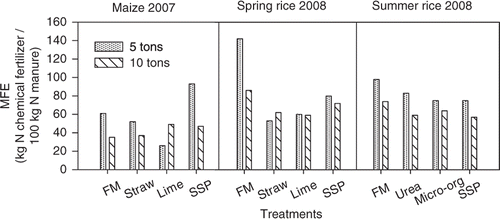Figures & data
Figure 1. Climatic data (bars: monthly rainfall and line: average monthly temperature), and composting and cropping periods during the entire experiment.
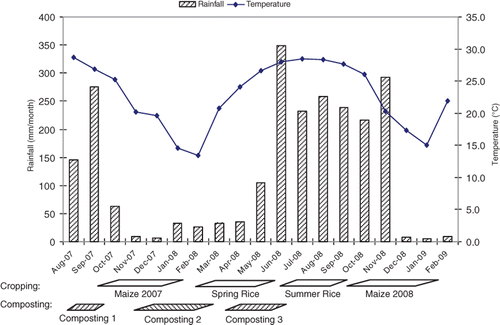
Table 1. Mineral fertilizer nitrogen (N) and manure or compost types and rates (ha−1) applied to the different crops in the sequence
Figure 2. Temperature changes in the compost heaps in the different composting batches (composting 1, 2 and 3) to be used for subsequent crops (maize, spring rice and summer rice, respectively; see ).
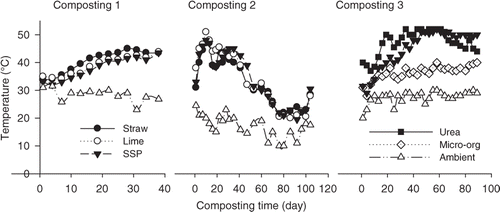
Figure 3. Proportion of initial dry weight (DM), total nitrogen (N) and ammonium-N (NH4-N) remaining after composting (mean values; T-bars represent the standard deviation of the samples; n = 3). SSP, superphosphate.
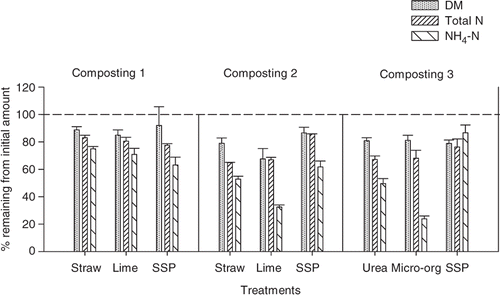
Table 2. Concentration of dry matter (DM), ash, carbon (C) and nutrients in fresh manure and composted manure in each of the three batches of composting; the values for fresh manure are averaged over all fresh manures used
Table 3. Effects of composts and manure types, manure and mineral nitrogen (N) fertilizer amount on yield and N uptake at mid-season and harvest in the maize–rice–rice–maize crop sequence
Figure 4. Effect of mineral fertiliser nitrogen (N), compost/manure types and compost/manure amount on crop grain yield in the crop sequence. The last graph (for maize 2008) shows the residual effect of one year of application of different compost/manure types on maize grain yield. The different letters at the top of columns represent significantly different values (P < 0.05). FM, fresh manure; SSP, superphosphate.
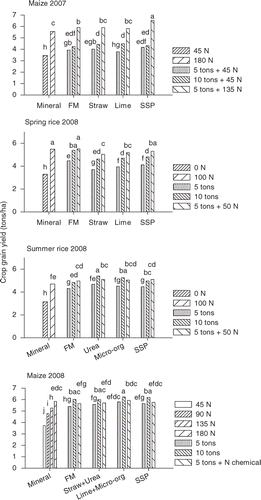
Table 4. Nitrogen (N) uptake of whole aboveground plant biomass (kg ha−1) at mid-season and harvest and N use efficiency (NUE) at harvest during the maize–rice–rice–maize crop sequence for the treatments
Figure 5. Mineral fertiliser equivalent (MFE) of the composts and manure types applied, calculated based on nitrogen (N) uptake at harvest. FM, fresh manure; SSP, superphosphate.
